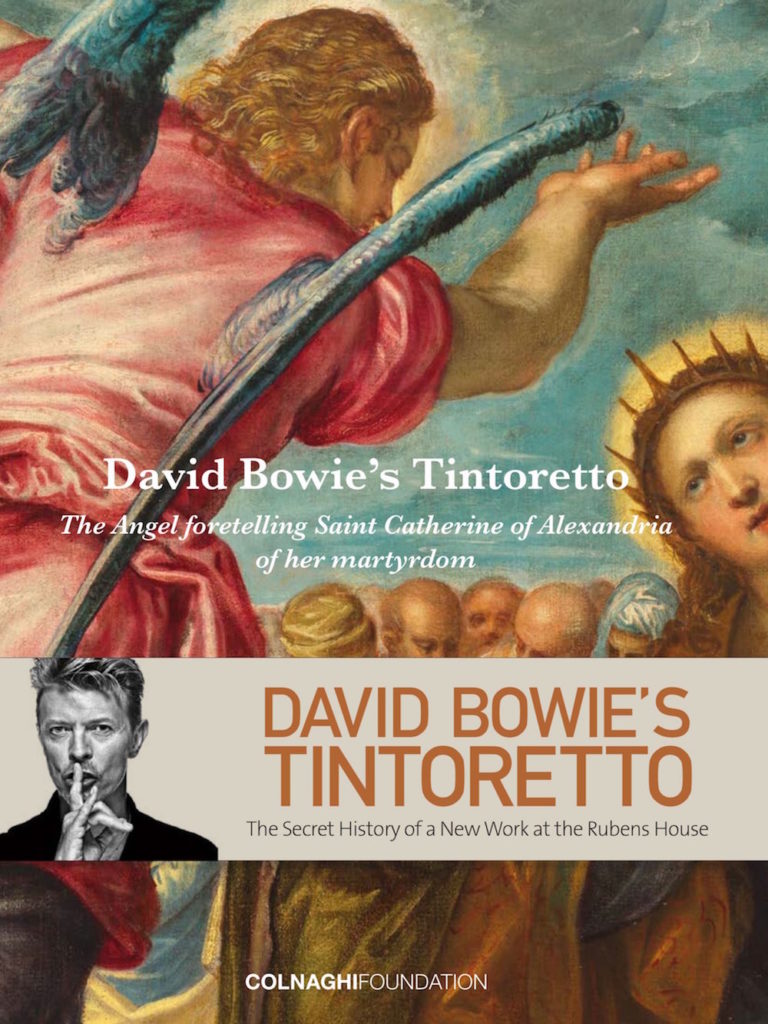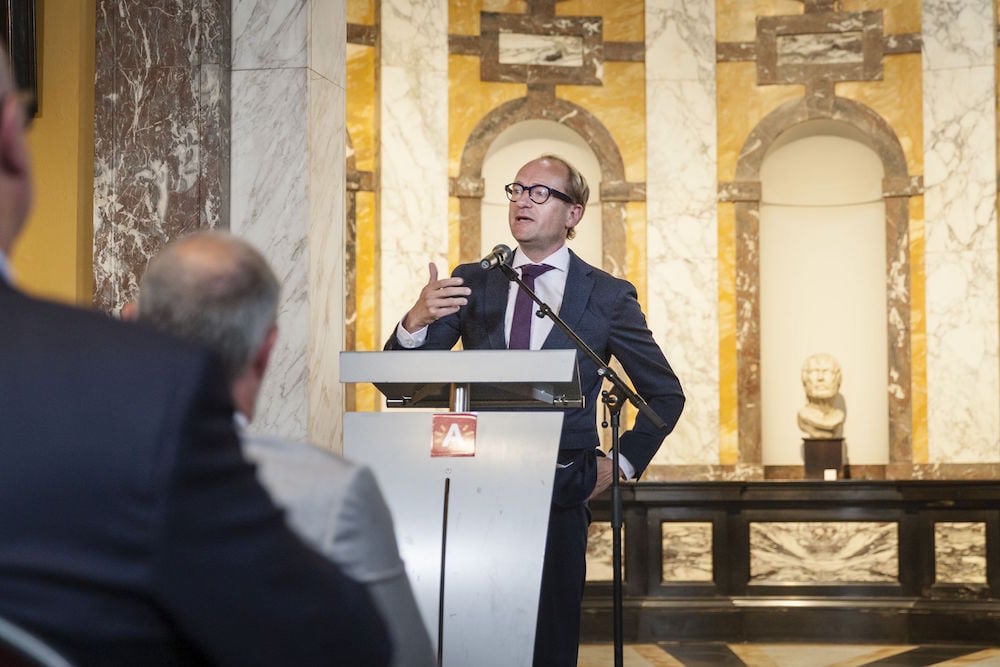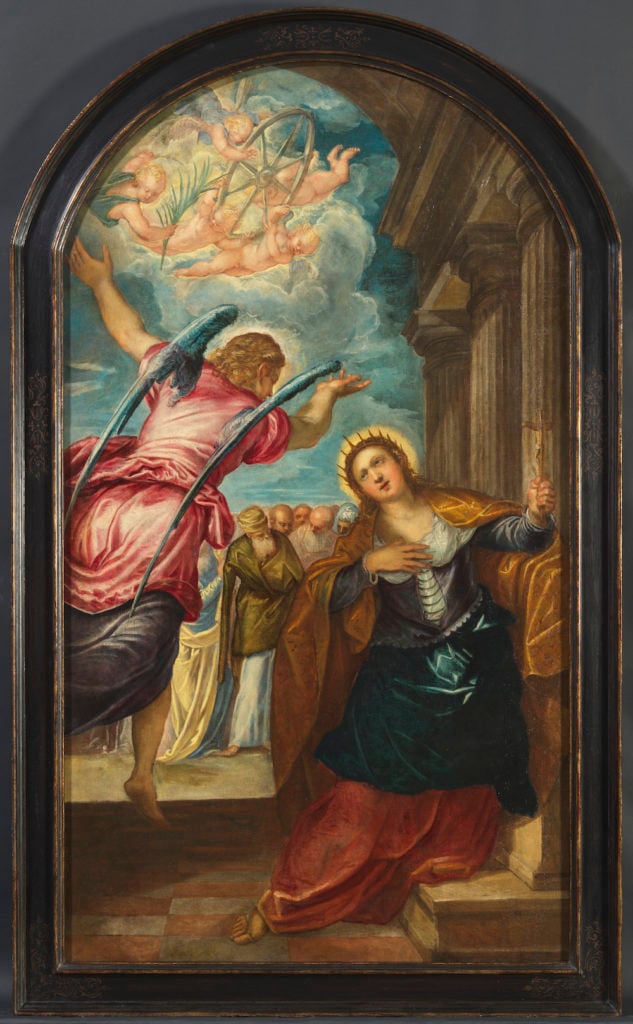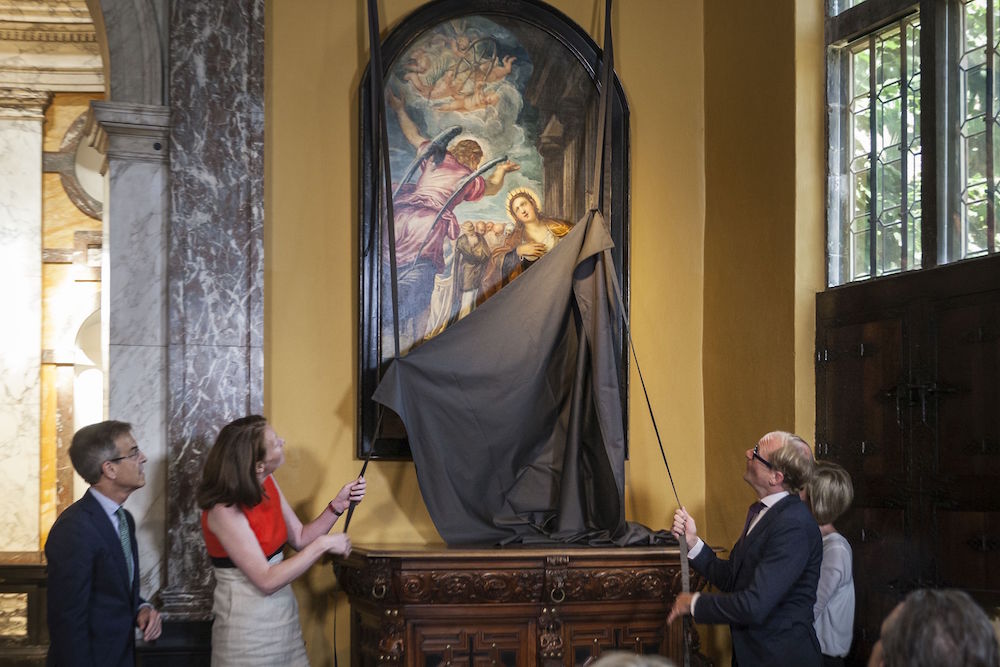On View
David Bowie’s Prized Tintoretto Unveiled in Antwerp Ahead of Trip to Venice Biennale
In 2019, the painting will temporarily return to its original home.

In 2019, the painting will temporarily return to its original home.

Eileen Kinsella

The late rock star David Bowie’s prized Jacopo Tintoretto altarpiece is now on view to the public. A collector who bought the work at auction last year has loaned the painting to Rubens House in Antwerp, Belgium, the former home and studio of the Baroque artist Peter Paul Rubens. Museum officials also announced today that the work will travel to Venice, Italy, for the 2019 Biennale.

Flemish tourism minister Ben Weyts at yesterday’s press conference. Courtesy Rubens House, Antwerp, Belgium.
The Angel Foretelling Saint Catherine of Alexandria of Her Martyrdom (circa 1570s) was one of Bowie’s first art purchases, and remained in his collection for more than 30 years. The musician typically collected more modern and contemporary fare, including works by Frank Auerbach, Jean-Michel Basquiat, and Damien Hirst. But he was so fascinated with Tintoretto that he named his music label after him.
Last fall, when Sotheby’s offered Bowie’s art collection in London, a collector shelled out £191,000 ($237,000) for the work, and promptly announced plans to loan it long-term to Rubens House, one of Bowie’s favorite museums. (Rubens, like Bowie, was a big fan of Tintoretto, and owned a number of his works.)

Jacopo Tintoretto, The Angel Foretelling Saint Catherine of Alexandria of Her Martyrdom (circa 1570s). Courtesy Rubens House, Antwerp, Belgium
The painting’s return to public view also coincides with new research. Using radiography and infrared reflectography, experts from the KIK (Royal Institute for Cultural Heritage) discovered a drawing beneath the paint, indicating that the work was made 10 years earlier than originally thought. The number of adjustments hidden under the surface also indicates that the work was made entirely by Tintoretto himself, rather than with the help of the artist’s studio.
Tintoretto painted the work between 1560 and 1570 for the church of San Geminiano on the Piazza di San Marco in Venice, where it remained until the church was demolished in 1807. When it returns to Venice in two years, the work will be the focal point of an exhibition about the demolished church and the works it once housed.

Courtesy Rubens House, Antwerp, Belgium
At a press conference yesterday, Flemish tourism minister Ben Weyts announced that his support for the plan to show the work at the next Venice Biennale. According to a statement from the museum, Weyts called it “a unique opportunity to show our Flemish masters to the world in the place where—more than any other—they drew their inspiration from their Italian colleagues and from the classical legacy.”